Its lands with slopes facing north and east have the best exposure to the sun in the Southern Hemisphere. This innitiative of Michel Rolland brought together many relevant French growers and became one of the meccas of global wine tourism, just 120 kilometers away from the City of Mendoza.
The four wineries that can be visited within the property are an example of charisma and style. Bodega Monteviejo, Cuvelier Los Andes, Bodega DiamAndes and Bodega Rolland offer tours of their facilities and tastings of their wines produced only with grapes from the vineyards surrounding each establishment.
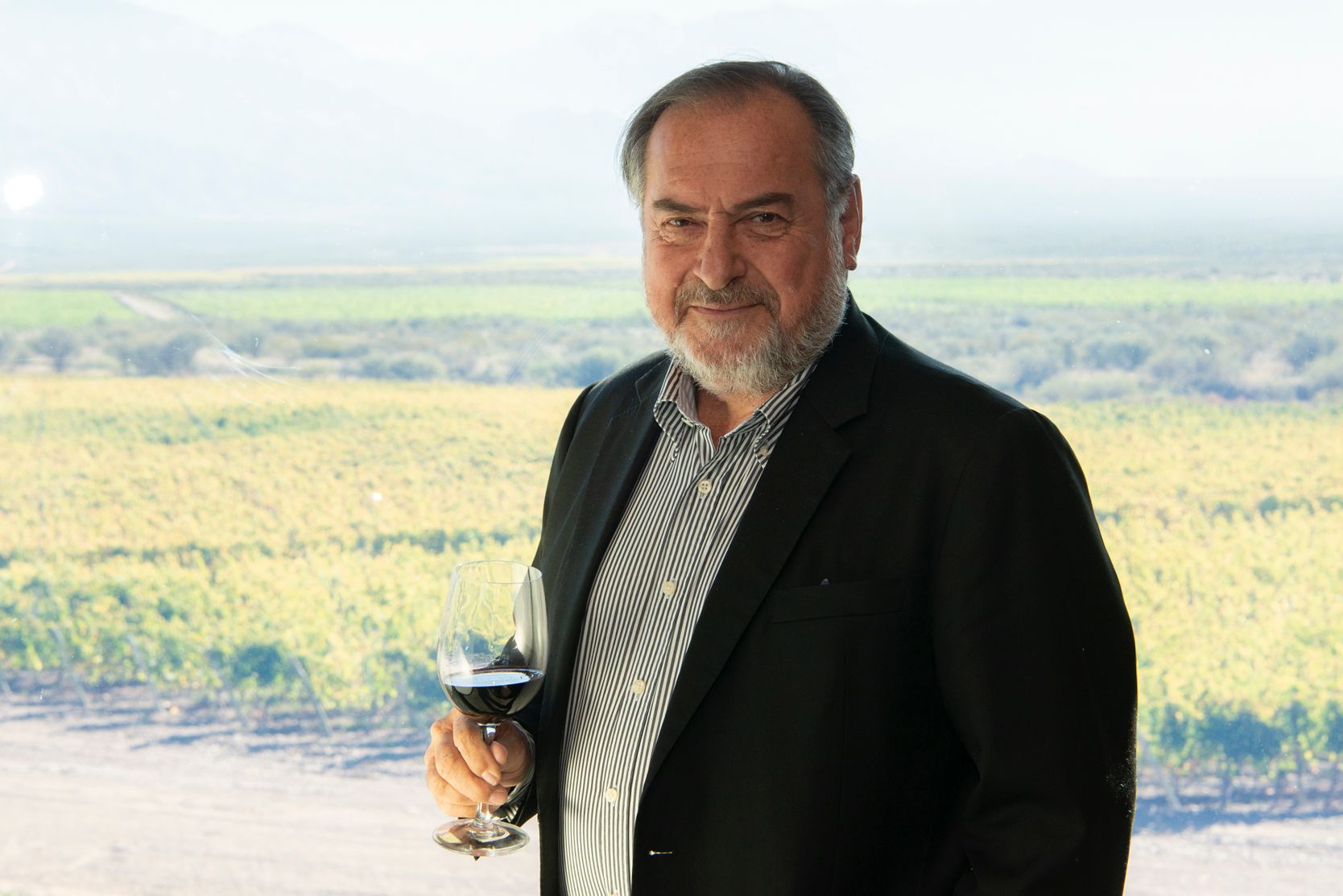
Michel Rolland created this incredible project in Uco Valley.
Regarding the construction of the wineries, the concept prioritized the founding of independent wineries, so that each of the families who accompanied Rolland could make their own wines, thus adding richness and diversity to the project. Built between 2002 and 2011, each of these establishments allocates a fraction of its grapes to the production of Clos de los Siete, a wine that currently unites Bodega Diamandes, from the Bonnie family; Bodega Monteviejo, from the Péré Vergé-Parent family; Cuvelier Los Andes, from the Cuvelier cousins and Bodega Rolland, from Michel Rolland. Thanks to this arrangement of such exclusive wineries within the same property, Clos de los Siete is also one of the most important and most visited wine and foodie attractions in the Uco Valley. At Clos de los Siete, you can experience at every step the spirit of the founding families, their passion for wine, their commitment to people and land, and their sensitivity to art and architecture, all framed by a unique landscape at the foot of the Andes.
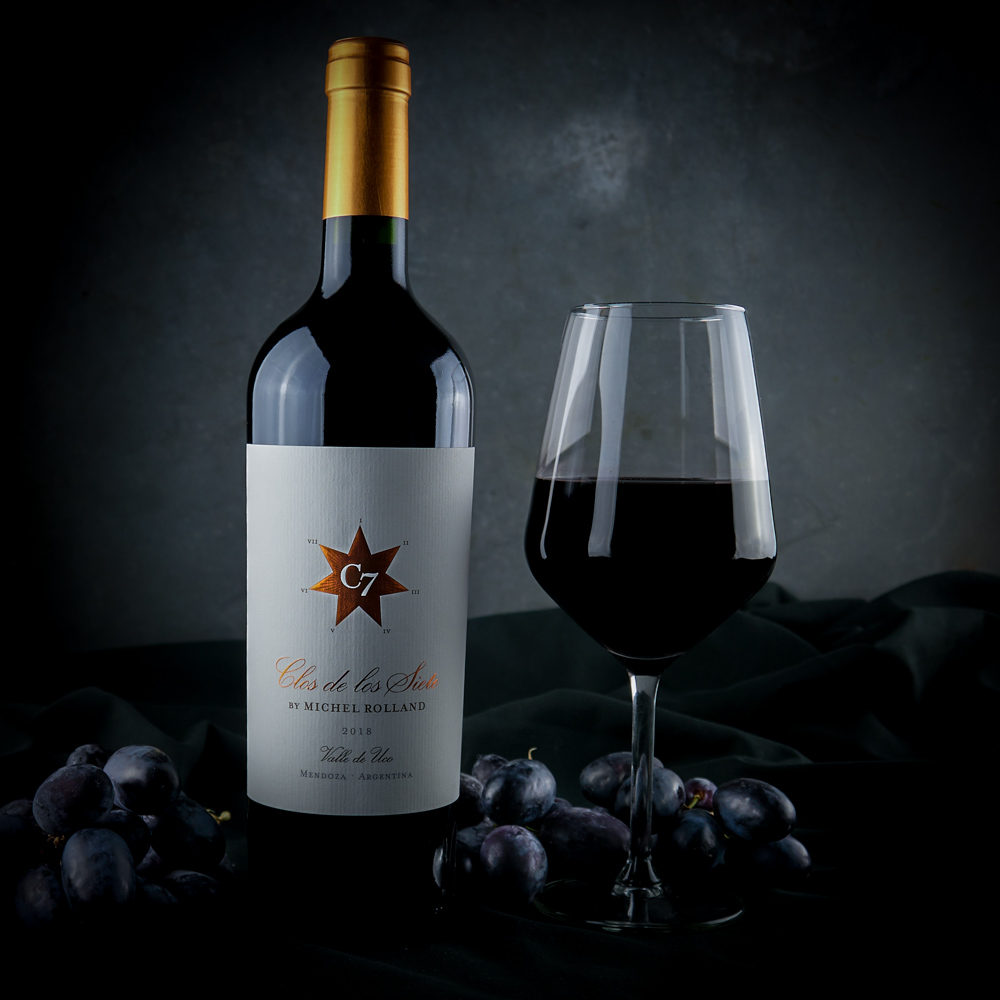
Clos de los Siete wine is produced with grapes contributed by the 4 wineries in the plot.
The history of this ambitious project
The roadmap of this property is closely linked to the winemaker Michel Rolland, consultant of prestigious wineries around the world. In 1998, Rolland’s drive brought together a group of French families already linked to wine, whose names are inseparable from the most renowned Grand Crus. This Frenchman, born in Pomerol, in the heart of the Bordeaux region, cradle of some of the most famous wines in the world, was immediately captivated by the Mendoza landscape. He fell in love with the place, but also with Argentina as a region that produces great wines. Thus, with a unique and innovative concept, Michel Rolland and his wife Dany started the project “Le Clos de los Siete”, acquiring 850 hectares at the foot of the Andes, in the Uco Valley of Mendoza. They were joined by friends, winemakers, investors passionate about wine and intrigued by Argentina.
“The work carried out at Vista Florès was as colossal as the winegrowing project, involving massive earthworks to clear the rock away, fill the fissures dug out by running rainwater and build 10 kilometers (over 6 miles) of levee to protect the vines from flooding during the rare, but diluvial rainstorms.”, said once Jean-Michel Arcaute the famous French Winemaker that was developing the project with Rolland until he died in a boat accident.
Nowadays, there are four wineries run by four passionate families from Bordeaux, France, under a common wine, blended by Michel Rolland, the initiator of the project. Its partners are Jean Guy Cuvelier, heir to a Bordeaux family with more than 100 years of winemaking tradition, who built Cuvelier los Andes; Catherine Pére-Vergé, owner of Chateau Le Gay, in Bordeaux, who built her Monteviejo Winery; and Jean-Jacques Bonnie, owner of Chateau Malartic Lagraviere, with the Diamandes brand.
Clos de los Siete combines dreams, a passion for wine, the majestic Mendoza landscapes and diverse architectural proposals that surprise with their originality and perfect pairing with the astonishing backdrop offered by the Uco Valley.
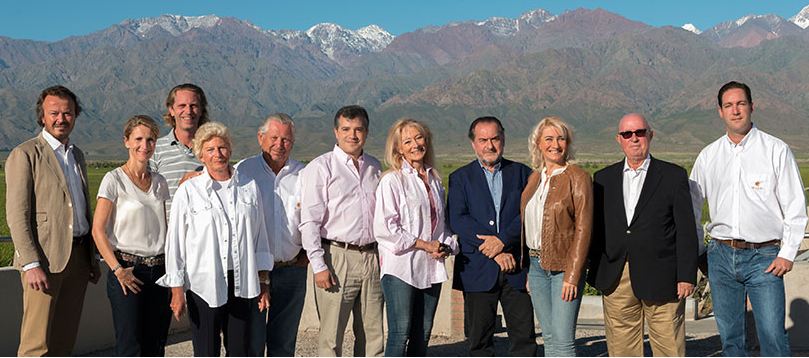
The partners
Monteviejo
Built in 2001, Bodega Monteviejo presents a stunning blend of both classical and modern architectural elements. Like a Greek coin, the winery has two distinct sides. The façade facing the mountains incorporates a contemporary temple design flanked by columns, expanses of glass and large staircases. The opposite side of the winery, seen from the entrance, has exposed brick and large windows. The building is bordered by vines, growing on sloping cultivated terraces, that reach all the way to the roof. The interplay of the sun crossing the mountains comes into play in the afternoon to create a dramatic effect of shadow and light across the winery.
The property spans 130 hectares with altitudes between 1000 and 1200 meters above sea level. The land has northern and eastern facing slopes, which give them a better exposure to the Southern Hemisphere sun.
With an area of 8500m2, Monteviejo operates with a gravity system and a double selection table for bunches and grapes to transport the best raw material without using pumps in order not to damage the grapes in any part of the process. From the harvest to bottling, including passing through oak aging in barrels, the wine continues in its natural direction using only the weight of the own grapes.
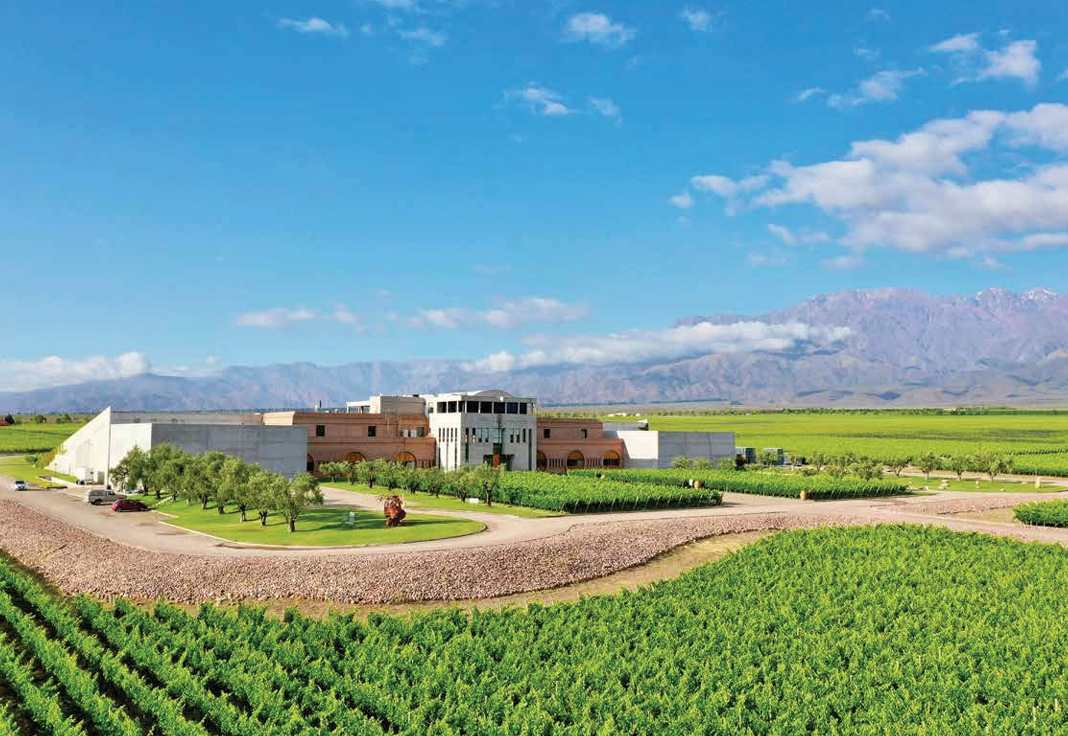
Monteviejo winery is renowned for its connection with art and culture.
Diamandes
The Bonnies bought 130 hectares in 2005 and opened the winery in 2010. The architecture is inspired by the name DiamAndes, which comes from combining the words “Diamante” (Diamond) and “Andes”. Mendoza reputed architects, Mario Yanzón and Eliana Bórmida, were in charge of the project. DiamAndes was built under the premise of respect for nature and the environment, integrating the architecture to the Andean landscape. The facility is able to accommodate visitors and provide an unforgettable experience tasting wines in their place of origin.
The architecture of the winery responds to the efficient system of gravity winemaking, allowing production of quality wines and accommodating natural thermal isolation for the aging of the wines. The building is thermally isolated and has large windows, allowing better use of natural light and economical energy use. The scale, shape and materials used in creating the structure were thoughtfully adapted to the location with regard to the Andes Range and the native flora of the area. The dramatic interior spaces include a circular barrel-cellar.

The central piazza at Diamandes winery showcases an structure that builds a diamond with the background of the Andes mountains as a tribute to its name.
Cuvelier Los Andes
winery is a simple and efficient construction designed by the local architects Japaz and Compe and composed of three “warehouses” in triangle shape. With a total capacity of 500,000 litres and 600 square metres for offices and residences, it was designed to optimize the efficiency of the wine-making process from the vinification to the aging to the bottling, the structure blends naturally into the landscape. It was opened in 2007 at a cost of US$5 million. The property has 55 hectares planted with Malbec, Cabernet Sauvignon, Merlot, Syrah, Petit Verdot and Cabernet Franc.
The Cuvelier family considers that their vineyards seem to have found a privileged place on the terrain of alluvial stones and sands, aided by the hot and dry climate of Mendoza, with cool nights typical of the outskirts of the Andes mountain range. The project started with the plantation of their vineyards in 1998 and opened to the public after the construction of their winery 2007.
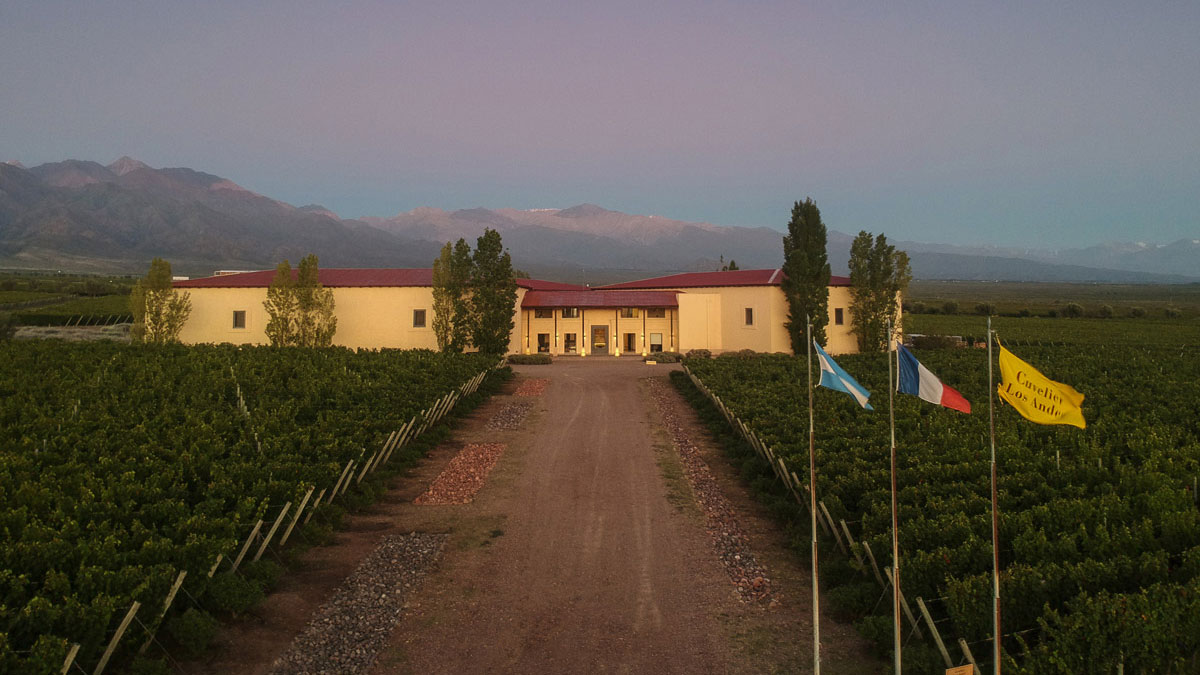
Cuvelier blends French and Argentine features in its architecture and wines.
Rolland Winery
Bodega Rolland has been the last creation and construction in Clos de los Siete. A 2 ha parcel of virgin land had been saved for this project: thousands of m3 of soil were used to flatten and level the naturally sloping land, in order to create a 3,200 m2 foundation (40m x 80m).
The construction started in August 2009 and the winery was operational for the harvest in March 2010:
- With a winery composed of 54 small thermoregulated concrete vats, designed under the supervision of a Bordeaux specialist, and equipped to handle grapes by gravity, completed with a battery of stainless steel tanks.
- Spacious warehouse places and barrel cellars,
- 200 bordelaises type barrels renewed each year,
- Including a great deal of French technologies in the processes of grape sorting, pressuring, winemaking, ageing, air humidifying.
- Still a back-to-basics project, which aims to be functional, and built with quality materials and equipments, very operational and simple, where the ultimate goal is respecting the fruit and process efficiency throughout winemaking.
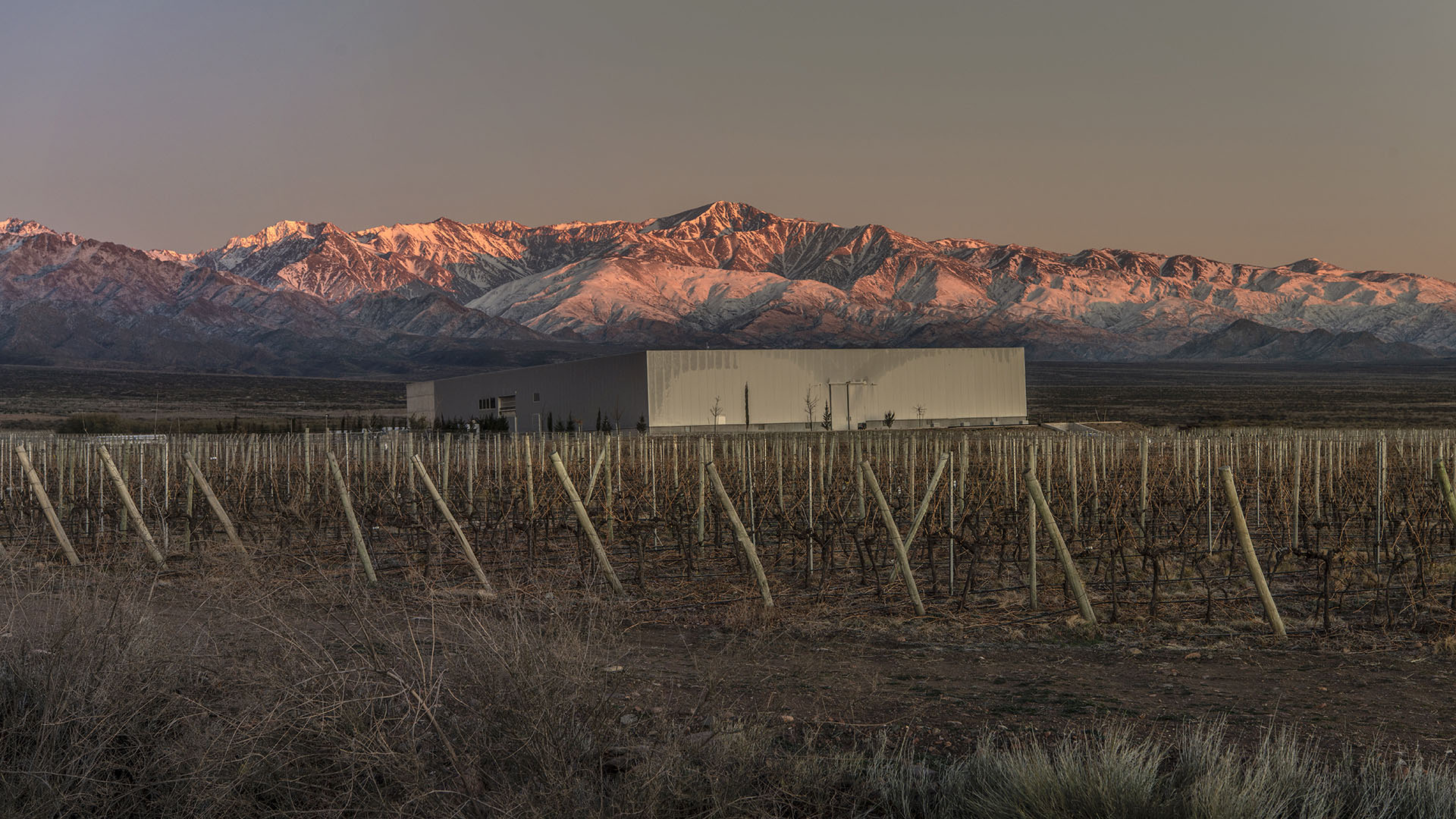
Rolland winery is the latest addition to the project.
Photos and text credit: EMETUR (Tourism Board of Mendoza)